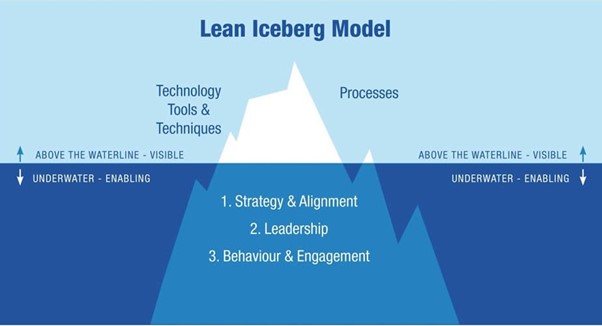Hungry Cultures
17 December 2023
If you’ve read a few of these blogs you’ll know that I collect business phrases and new terminologies like some kind of airport business book magpie. There are those that I adore but there are an equal number of catchphrases that drive me mad. One of the phrases that makes me sigh inside is “culture eats strategy for breakfast” … apparently attributable to legendary Management Guru, Peter Drucker.
There is much to love within Drucker’s views on leadership and management. I am a major fan. Decentralisation – empowering employees to get on and do. Tick! Customer centricity. Tick! Collaboration, Constant innovation and change. Tick, tick, tick! On the one hand, I know that culture, does indeed, heartily tuck into strategy like a scrambled egg on toast (not sourdough, urgh, who likes that?!) … but on the other hand… given Drucker’s sensibilities, and how important a role he saw a leader having within an organisation, I think that the ‘culture eats strategy for breakfast’ statement can unfortunately be abused within the realms of organisational transformation. It’s often said with the undertone of ‘meh, culture eh, what’s the point in planning, the people will do what the people will do’.
Culture can indeed be a right git. It can set the ‘organisational tempo’, determining which things get done and which things, well, don’t. But yes there’s something about the phrase “culture eats strategy for breakfast” which feels so fatalistic… that culture is an immovable feast, and beast, something that you just have to ‘deal with’, that chomps through your plans, railroading everything in its path.
It can, and does, but I don’t think that the statement tells the whole story. Culture can change, like everything. I think it only tells half the story to talk about it like it’s this amorphous, psychological thing that just ‘is’.
Culture is more than a feeling or a vibe. It can only truly be discerned through the real and tangible existence of deliberate deeds and actions. Culture is a doing word. So the more I think about it, it’s so wrong to think of “culture” as some kind of psychological, untouchable enigma. Culture is rooted in repetitive practice. Its direction is changed not by merely willing it to change – culture is changed by doing.

Hines, P., Found, P., Griffiths, G., & Harrison, R. (2008). Staying Lean: Thriving, Not Just Surviving.. Cardiff: Lean Enterprise Research Centre: Cardiff University
The Sustainable Lean Iceberg by Hines, Found et al, has been an important contribution to the Lean Thinking movement. It illustrates all of the different parts of a lean enterprise differentiating between the ‘visible’ elements ‘above the waterline’ whilst the ‘under the waterline’ ‘invisible’ elements of a lean transformation “strategy, leadership and behaviour and engagement (a.k.a. organisational culture…. ahh culture… how casually you represent yourself!) form the overwhelming majority of the lean enterprise iceberg machine.
The ‘visible’ elements of the iceberg are blatantly in plain sight, jutting out from the depths of the deep, and lo, see too how simply they are expressed! “Processes” and the alliterative joy that is “Technology, Tools and Techniques”. These are the overt hallmarks of lean.. the visual management team information board, 5S yellow lines on the floor, kanban cards and heijunka boxes, some of the things that that you can instantly clock when walking into any well-functioning ‘lean’ distribution centre.
The subaquatic elements of the iceberg are harder to discern but they aren’t actually as ‘invisible’ as they would seem. There are lots of physical examples of all of these things that you can easily start to detect when you spend time in any organisation. How you are greeted when you walk through the door, how a manager discusses a new work task with their team, whether a member of staff knows what their role is, and how they need to work with others to help the organisation achieve what it wants to achieve.
However, the more I understand about effective and successful organisations, the more I appreciate how important the ‘tiny’ ‘top of the iceberg’ elements are. Their installation and the regular interaction and deliberate practice that they demand, sets the tone for all that lies beneath.

Within my Elements of Improvement model, one of the easiest ways to understand how tangible tools can help to create culture is to look at the part of the web which explores how visual management (increase visibility for customers and staff) interacts with ‘standard management routines’ (encourage standard management practices) and the practice of ‘going to gemba’ (Go to where the work is to see and understand). Leaders must be encouraged to interact with workers and the work, where it happens. It’s the ‘Undercover Boss’ principle – actually see firsthand the realities that your management decisions create. Only then can you fully understand how to lead effective organisational systems. Dedicated time and space needs to be set aside to do this ‘back to the shopfloor’ work through standard management practices and routines. If the work is ‘made visible’ through scrum boards or communication cells then the leader can coach and assist problem solving. Having an ‘andon’ or ‘call for help’ process in place will enable the coaching loop, or ‘kata’, to occur, which should trigger a plan, do, check, act learning cycle. The ability for workers to call leaders on demand to assist with a quality problem is an exceptionally powerful organisational culture device.
I appreciate that I’ve covered a lot of lean there in just a couple of sentences. What I think is important, for the purposes of this blog, is that tools have to be put in place, practically, and then interaction has to happen with these tools at various points in the working day. These conscious tactics work together to create a working environment where workers feel empowered and supported. When you regularly interact with the visible, physical tools of lean and embrace them to challenge and improve work, they can palpably combine to create a psychologically safe, productive and empowering culture.
The problem is, of course, that you may first need an organisational culture which is prepared to give these tools a go, to then see how they can catalyse an even more special culture. If giving them a go is possible, with a bit of discipline, over time, an impressive new culture is formed.
If you have a strategy which seeks to put these kind of practical tools in place in organisations, which encourages people to regularly interact with these tools, you start to change the culture to be more supportive, caring of quality and one that constantly seeks improvement. The culture is changed.
And in that way, a good strategy can take culture out for a lavish lunch.
- Double Meanings
- Ticketing Masterplans
- When will it all end …
- Lifetime Loyalty and Taylor Swift
- Looking at Things Differently
- Networking Noodles
- Addicted to Truth
- Designs on Service Design
- The Multiple Joys of Universal Design
- Hungry Cultures
- Event Lean
- The Traffic Analogy
- Moving on Up
- Rosé Cava Revolution?
- Powerpoint Sneaky Lean
- Writing about Writing
- ChatGPT Response: Exploring the Art of Expression: Unveiling the Magic of Writing in the Style of Sarah Lethbridge
- Help to Grow Coldplay Style
- Caring IS Everything!
- Institutional Flapping
- “Just Do the Next Right Thing”
- Trust Thermoclines
- Organisational Tempo
- The Inaugural Lethbridge Customer Service Awards
- Vaccine Lean – The Dawn of the Water Spider
- The Queen and Lean
- Decisions, Decisions, Decisions
- Peaceful Protest
- Tesla Tales
- Back to Reality!
- Carrots, Sticks and Buckets of Time Tricks
- The Great Pandemic Pause
- Organisational Therapy
- Late Night Wordleing
- Vaccine Lean
- Chief Letters of Complaint Officer
- AMBAZING Accreditation!
- My Big Lean Head
- [Let us] Help [you] to Grow: Management
- The Love Island Blog
- October 2024 (1)
- September 2024 (1)
- July 2024 (2)
- June 2024 (1)
- May 2024 (1)
- March 2024 (1)
- February 2024 (2)
- December 2023 (2)
- October 2023 (2)
- September 2023 (1)
- July 2023 (3)
- June 2023 (1)
- May 2023 (1)
- April 2023 (1)
- March 2023 (1)
- February 2023 (1)
- January 2023 (1)
- November 2022 (1)
- October 2022 (2)
- August 2022 (2)
- July 2022 (1)
- May 2022 (2)
- April 2022 (1)
- February 2022 (1)
- January 2022 (1)
- December 2021 (2)
- November 2021 (1)
- October 2021 (1)
- September 2021 (1)
- August 2021 (1)
- July 2021 (1)
- May 2021 (2)
- April 2021 (1)
- March 2021 (1)
- January 2021 (1)
- December 2020 (1)
- October 2020 (3)
- August 2020 (1)
- June 2020 (2)
- April 2020 (1)
- March 2020 (1)
- February 2020 (1)
- December 2019 (2)
- October 2019 (1)
- September 2019 (1)
- August 2019 (1)
- July 2019 (1)
- June 2019 (1)
- February 2019 (3)
- October 2018 (1)
- September 2018 (1)
- March 2018 (10)
- April 2016 (1)
- January 2015 (3)
- July 2014 (9)
- September 2013 (1)
